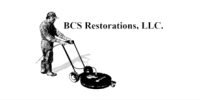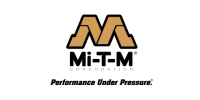Do you have questions about commercial pressure washing or parking lot maintenance?
We've got answers
Commercial Pressure Washing
What is the difference between power washing and pressure washing?
The main difference between power washing vs. pressure washing is the heat. The jet wash in a power washing machine uses heated water, whereas the water in a pressure washer is not heated. ... The heated water makes it easier to clean surfaces, including removing gum and other residues — just as it does when doing dishes or washing your hands.
What's the difference between hot vs. cold pressure washing?
Like the dishes in your sink, hot water "melts" grease and grime; cold water only pushes it around. On the other hand, if you're simply blasting away sand, caked-on mud, or even stripping paint, a cold water pressure washer will work just fine.
What's the difference between gallons per minute (GPM) and pounds per square inch (PSI)?
PSI (Pounds per Square Inch) refers to the amount of cleaning pressure the machine can produce. GPM (Gallons per Minute) is the amount of water that is coming from the machine.
What's more critical, GPM or PSI?
In our opinion, both are important, but GPM is underrated. Too much pressure can ruin surfaces, so it must be used in the right places, usually with the right chemicals and cleansers to be most effective. High GPM machines can efficiently move the most soil and dirt and allow larger areas to be cleaned economically.
If I pressure wash my parking lot, do I have to stripe and seal it at the same time?
If your parking lot is concrete, you can pressure wash it to clean it without necessarily stripping it. Striping will be needed when the paint is chipping or fading. Like most, if your lot is asphalt, you will not want to pressure wash it because it will dig up the asphalt. In this case, you can clean it with low pressure and cleansers/degreasers. Again, repairs to the asphalt and striping might be needed afterward. Aside from making your parking lot look great, sealcoating is the most essential maintenance element of your asphalt parking lot. Sealcoat is applied over the asphalt to help protect against the daily destructive elements. Good line striping creates direction and provides a vital safety factor for your parking lot.
Parking Lot Projects
How do I know if I need to add bollards to my parking lot?
To prevent cars from driving through them, they should be no farther apart than 5 feet. However, bollards are used as storefront and building protection, campus security, sidewalk safety, around utilities, near loading docks, and to protect landmarks and plantings. These various sites and styles of bollards may require different spacing.
Is it better to install asphalt speed bumps or plastic/rubber speed bumps?
While asphalt speed bumps cost more to install, they're more resistant to damage than many plastic or rubber models.
Are there requirements for signage in a parking lot?
The bottom of your sign must be placed at a minimum of sixty inches above the ground to ensure visibility. Signs for van spaces should be clearly marked "van accessible." Any further clarifications can be found in the ADA National Network's Factsheet on Accessible Parking Lot Signs.
Do I have to have a specific sign in front of a handicapped parking spot?
The international symbol of accessibility should be posted on all accessible parking spaces marking the reserved spot. ADA handicap parking signs (commonly known as Access Signs) posted must be visible from the drivers' seat of the vehicle and located right in view of parking spaces.
Can I add wheel stops to an existing parking lot?
Yes, wheel stops can be added to any existing parking lot. Typical installation methods include epoxy, mechanical pinning, and gravity weighted. Wheel stops epoxied to the parking lot may be knocked loose and require routine inspections.
Sealcoating & Striping
What is the difference between seal coating and striping?
Seal coat is a product used to coat older asphalt to protect it from UV rays and spruce up the surface's look. Striping is the paint markings used to designate parking spaces and directional instructions on the ground.
How often should I seal coat and stripe my commercial parking lot?
Typically, sealcoating is recommended every three years to provide adequate pavement protection as well as attractive curb appeal for your commercial property or home.
Do I have to stripe every time I seal coat my commercial parking lot?
Typically, it's an excellent idea to restripe your parking lot every 18 to 24 months, depending on your location and climate, and you want the stripes and spaces in the lot to be clear and bright.
Do you fill the cracks in my parking lot when you seal coat and stripe it?
Sealcoating is not designed to be an asphalt crack filler. It is made to seal the surface and protect it from the elements such as UV light, salts, and oils. It is not flexible enough to fill a crack without re-cracking, and it does not have adhesion quality's that Asphalt Crack Filler has.
When do you use blue and red when you are striping a parking lot?
Curb striping or painting is used to clarify parking and other curb use rules. The color painted on curbs means: White (or no color): Parking allowed, unless restricted or limited by signs. Blue: Parking for the disabled only. Red: Fire/First Responders only.
When do you use yellow or white for parking lots?
This is based on the property owner's preference; either yellow or white can be used. A good time to change colors is when the asphalt is being seal coated.
Can I reconfigure my parking or remove some lines.
The parking lines' configuration is usually dictated by local code or by the building engineer. Within those limits, we can scarify away old lines and "move" them.
How is the paint for the stripes applied?
Paint should be applied using an airless striping machine at a minimum of 13 mil thickness to ensure high-quality lot marking.
What is the "dry" time for seal coating?
We ask that you please allow at least 48 hours of drying time, and out of those 48 hours, 12 hours be in the sunlight. Drying time may vary from day to day, so we ask that you use your best judgment. IF IT LOOKS WET, IT IS WET. You may walk on your asphalt as soon as it looks dry.
What is the "dry" time for striping?
Typical drying time is 30 minutes; however, traffic should remain off the lot for at least one full hour.
What are the weather dependencies for seal coating?
Sealcoating is best applied when pavement and ambient temperatures are at least 50 degrees Fahrenheit. However, the temperature should not be any higher than 85 degrees Fahrenheit. The pavement should not be wet.
What are the weather dependencies for striping?
Line striping is best applied when pavement and ambient temperatures are at least 45 degrees Fahrenheit. The pavement must not be wet.
Concrete Sidewalk & Asphalt Repair
How do you repair concrete that tree roots have damaged?
Invasive tree roots buckle and crack concrete in their search for water sources resulting in the breaking, cracking, warping, or buckling of whatever structure is above. The damaged concrete must be saw cut and removed. Once the tree roots have been removed, the new concrete can then be formed and poured.
Do I have to shut down my parking lot in certain areas while you are doing the asphalt repair?
It is best to wait at least 24 hours before driving on the new surface. We often advise that you wait longer during hot weather. Following installation, be sure to follow a regular preventative maintenance plan, including sealcoating and crack filling, to keep your asphalt looking its best.
After an asphalt repair job, how long do we wait to do seal coating and striping?
Typically, sealcoating is recommended every three years to provide adequate pavement protection as well as attractive curb appeal for your commercial property or home. New patches don't have to be seal coated until the next time you're going to be seal coating the whole lot.
What affects the cure time of concrete and asphalt?
For most concrete structures, the curing period at temperatures above 40º F should be a minimum of 7 days or until 70% of the specified compressive or flexural strength is attained. The period can be reduced to 3 days if high early strength concrete is used and the temperature is above 50º F. Fresh asphalt is laid at about 300º F, so it cools rapidly, even in hot ambient temperatures.
If the humidity is above 90%, sealer or paint should not be applied due to air saturation. Temperature: Temperature refers to both ambient and surface temperatures. ... The higher the temperature, the faster evaporation, and thus dry time.
How do I decide whether to use a cold patch or Hot Mix Asphalt (HMA)?
The truth is that you should be using a hot mix to repair your potholes effectively. However, cold patches are usually used as a temporary fix until you can have the pothole repaired adequately. Hot-mix repairs are a much bigger process and may take time to perform.
30+
Years of Experience

Started in 1989 with 1 man.
1,000+
Site Visits Per Year

Using tracking and logistics software to manage visits.
6
Southeast States Covered

Based in Atlanta with Operations in Nashville & Charlotte.
11
Commercial Crews

Pressure Washing, Parking Lot Striping & Painting Crews.


